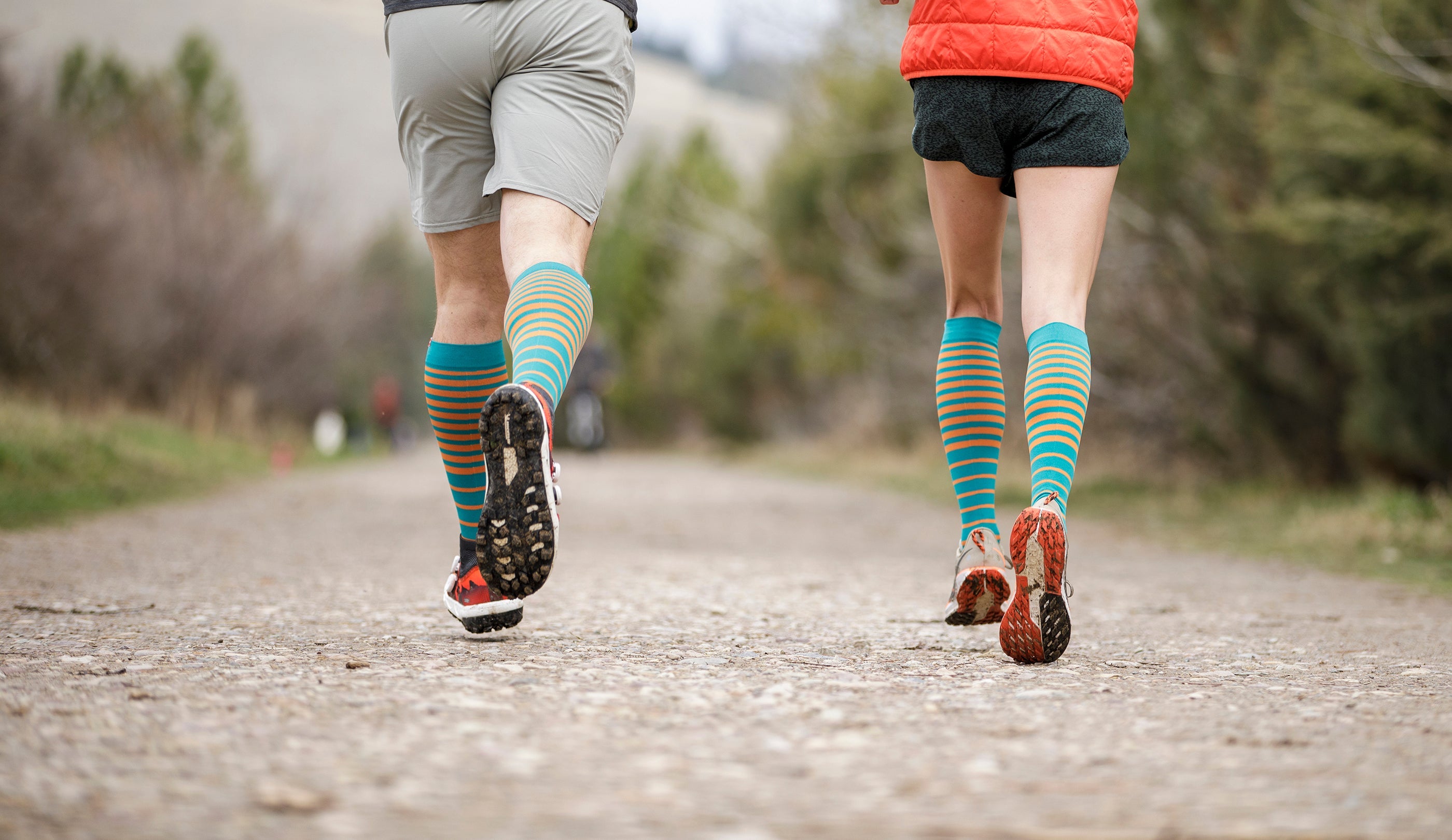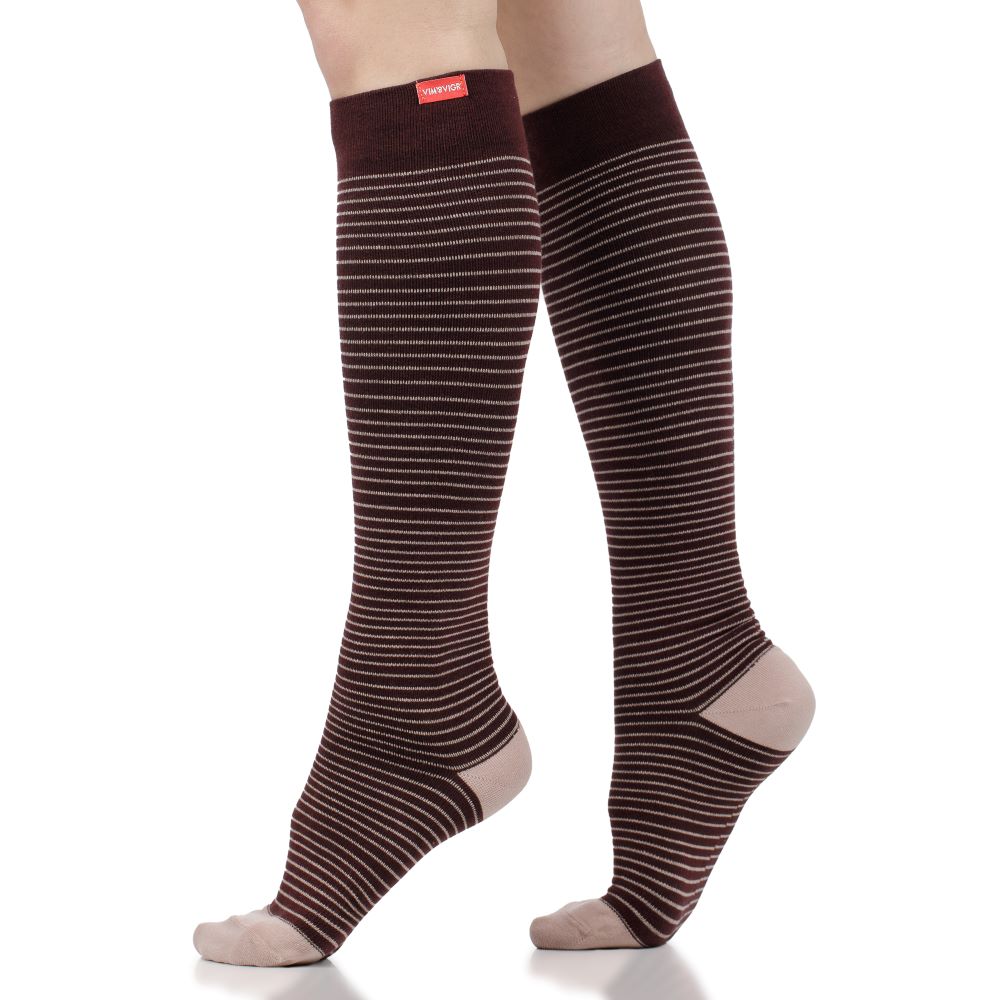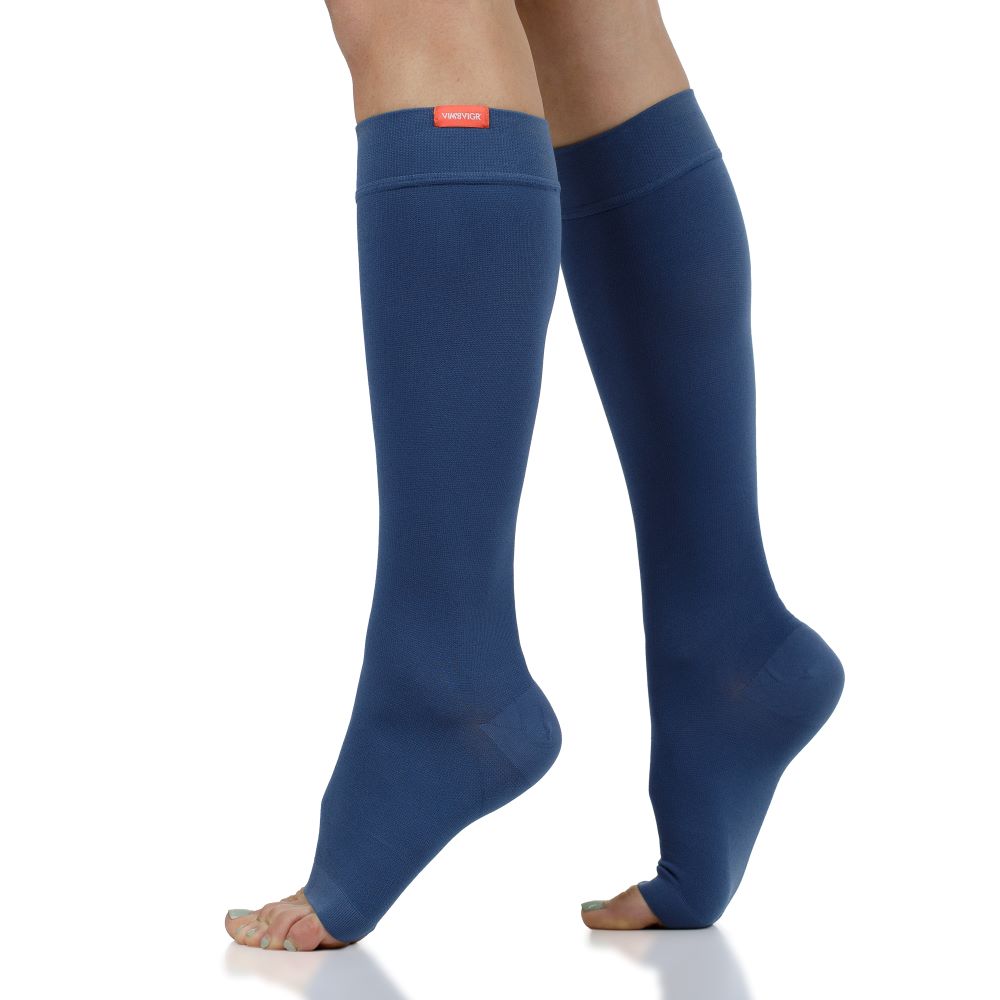6 Chronic Illnesses that May Benefit from Compression

by Caitlin Reid
Most of us have heard that compression garments can make airline travel safer thanks to their ability to minimize the risk of DVT, but did you know they can also help manage symptoms from a number of other chronic conditions? Thanks to their design, studies have found there are countless benefits of compression socks, for people with no medical complications to those with chronic illnesses. Below, discover six chronic illnesses that may benefit from incorporating compression into the treatment mix.
1. Venous Leg Ulcers
In people with healed venous leg ulcers, one study found that compression socks can help reduce the risk of recurrence by about half. A venous leg ulcer is an open wound in the skin of the lower leg caused by high blood pressure in the leg veins. They’re usually caused by impaired function of the lower-leg venous system.
Compression therapy is recognized as an important aspect of the treatment and prevention of recurrent leg ulcers. This is because compression socks can lower venous hypertension, decrease venous stasis and inflammation, and enhance tissue vascularization.
2. Diabetes-Related Edema
A number of studies have demonstrated the benefits of compression socks for diabetes patients. In one study, subjects were asked to wear mild-compression diabetic socks during all waking hours to see if it would help minimize edema-related swelling.
Those who wore mild-compression diabetic socks demonstrated significant decreases in calf and ankle circumferences at the end of treatment as compared to baseline. The study concluded compression socks specifically designed for diabetics can safely and effectively help treat diabetes-related edema.
3. Sleep Apnea
A surprising condition that may improve thanks to compression is sleep apnea. The reasoning is that fluid shift from the legs to the neck contributes to the pathogenesis of sleep apnea. Thanks to compression garments’ ability to reduce fluid in the legs, one study found that when participants wore compression stockings during the day, the extent of their sleep apnea was minimized. The researchers believed this was due to the reduced fluid volume in the legs and increased pharyngeal size.
4. Liver Disease
Liver disease can cause swelling in areas such as the abdomen or lower legs. Thanks to evidence showing the ability of compression socks to minimize swelling in the legs, swelling related to liver disease can also be improved thanks to compression socks.
5. Chronic Venous Insufficiency
Knowing how to improve blood circulation in people with chronic venous insufficiency (CVI) is an important element of the disease management. Chronic venous insufficiency is the most common cause of the formation of lower-limb ulcers and accounts for up to 80 percent of the approximately 2.5 million leg ulcer cases in the United States.
One report states: “Compression therapy remains the cornerstone of management for patients with chronic venous insufficiency.” Compression socks are extremely beneficial and regularly used to help with the management of CVI.
6. Deep Vein Thrombosis Prevention
Most people know compression socks help prevent deep vein thrombosis (DVT) formation, but it’s interesting to learn what kind of compression is needed. The risk of DVT formation is increased during long-haul air travel and post-surgery, two examples of when compression socks can be extremely useful.
One study examining compression stockings said: “The stockings are recommended for use in DVT, edema, lymphedema, varicose veins, and PTS to improve circulation and aid in leg health in patients who have suffered from DVT and PTS.”
To get an idea of how tight compression garments should be, the study above provides general guidelines: “If the patient wears a properly fitted stocking at 20-30 mmHg and notices that fluid accumulates during the day, then increasing the compression to the next level (30-40 mmHg) should be considered.”
A number of chronic illnesses can benefit from compression therapy, though it is important to always consult your doctor before deciding to add compression into your treatment. Thankfully, innovative brands like VIM & VIGR have developed compression garments blending stylish patterns with different grades of compression. With even medical grade (20-30 mmHg) compression socks getting a fashionable makeover, chronic illness sufferers now have a fun, fashionable way to integrate their compression needs into their everyday life without forfeiting style.
Caitlin Reid is a freelance journalist, copywriter and PR coordinator with over 10 years of experience with clients around the world. She is also a physiotherapist with a special interest in holistic and environmental well-being, blending the realms of evidence-based medicine with inspiring holistic health.
References:
https://www.ncbi.nlm.nih.gov/pmc/articles/PMC6394515/
https://www.ncbi.nlm.nih.gov/pubmed/28315576
https://www.sciencedirect.com/science/article/abs/pii/S1389945714004948
https://www.ncbi.nlm.nih.gov/pmc/articles/PMC2756631/
https://vimvigr.com/collections/higher-compression-collection-20-30-mmhg


















Hi Alan,
Thank you for reaching out. I believe you are referring to our compression leg sleeves. Our Calf compression sleeves are a fun and therapeutic alternative to regular socks. Made with advanced gradient pressure knitting for support and to aid in muscle recovery, our sleeves offer a moderate compression to re-energize and support your legs. For more details, feel free to click this link below:
https://vimvigr.com/collections/unisex-nylon-compression-leg-sleeves
Please let us know if there’s anything else we can assist you with.
Take care & best regards,
VIM & VIGR Customer Service
Hi Edith,
Thank you for reaching out. Here is a break-down of the content of each of our fabrics:
Nylon: 91% Nylon / 9% Spandex
Moisture-wick Nylon: 75% Moisture-wick Nylon / 13% Nylon / 12% Spandex
Cotton: 48% Cotton / 42% Nylon / 10% Spandex
Merino Wool: 45% Nylon / 40% Merino Wool / 15% Spandex
Our socks are Latex free, which is good as some people have allergic reactions to Latex.
Please let us know if there is anything else we can assist you with.
Take care & best regards,
VIM & VIGR Customer Service
How do I find the socks that end at the ankle and don’t fit the foot. That would make getting on and off a lot easier. Saw at start of your add but couldn’t find so I could order
Leave a comment